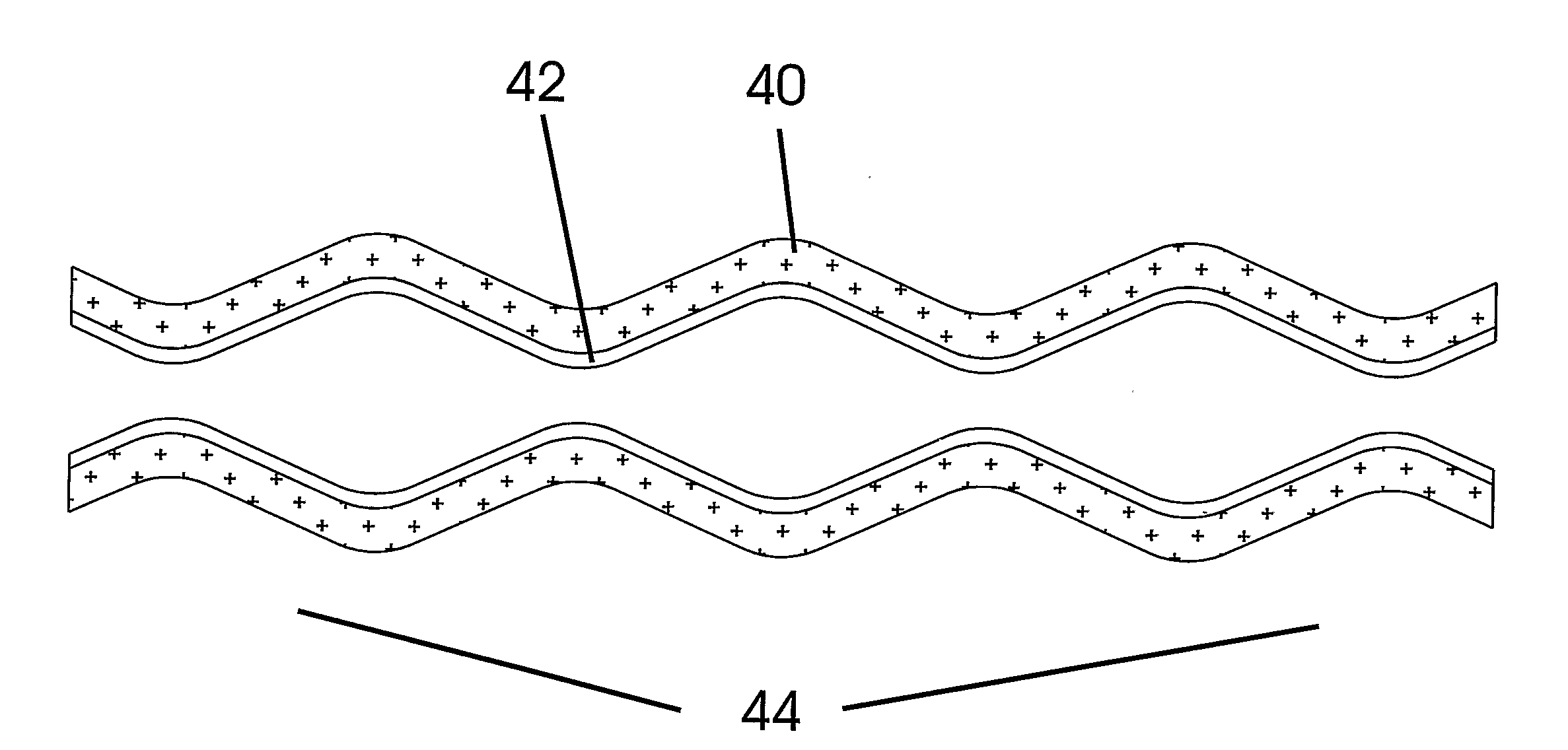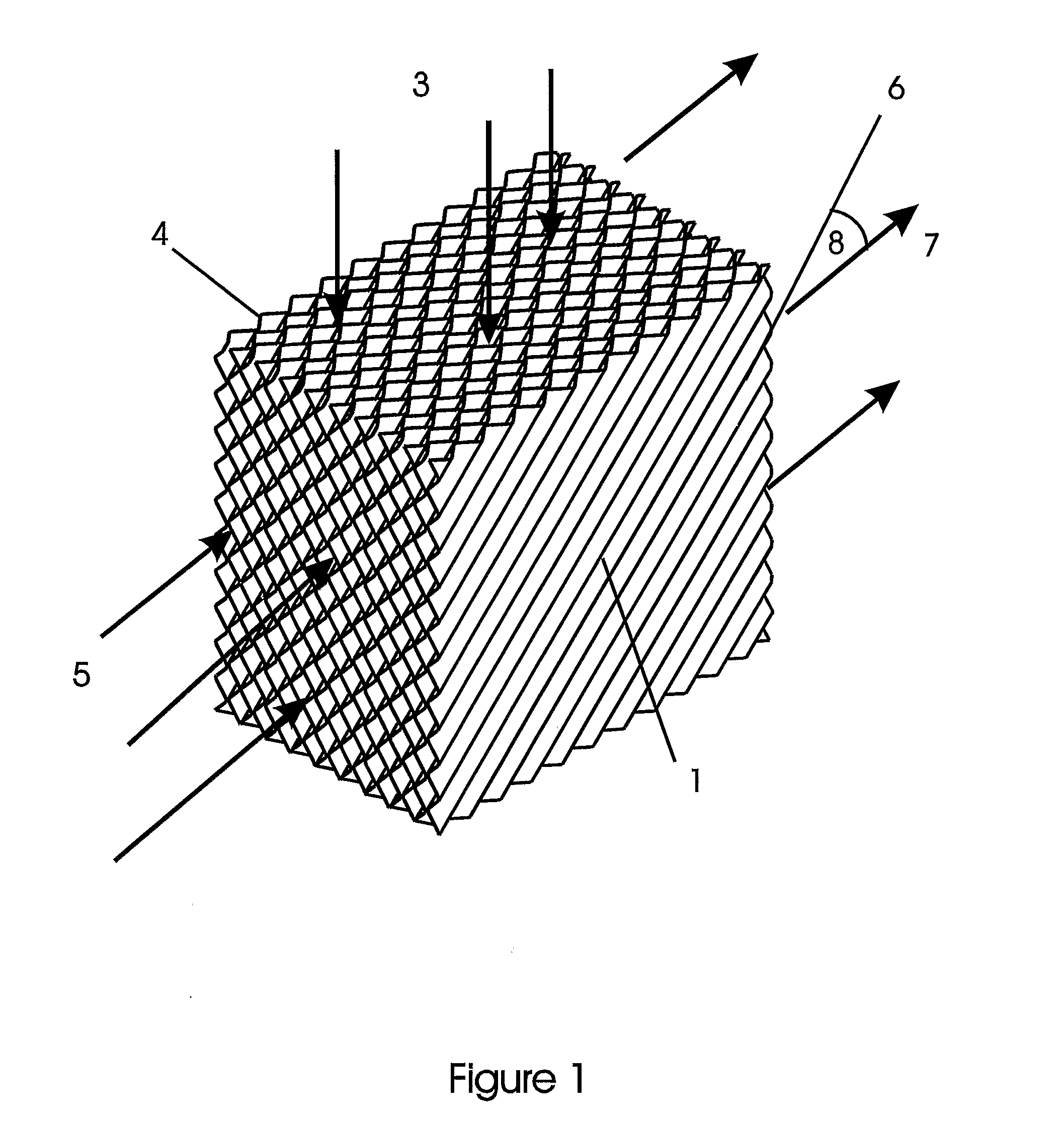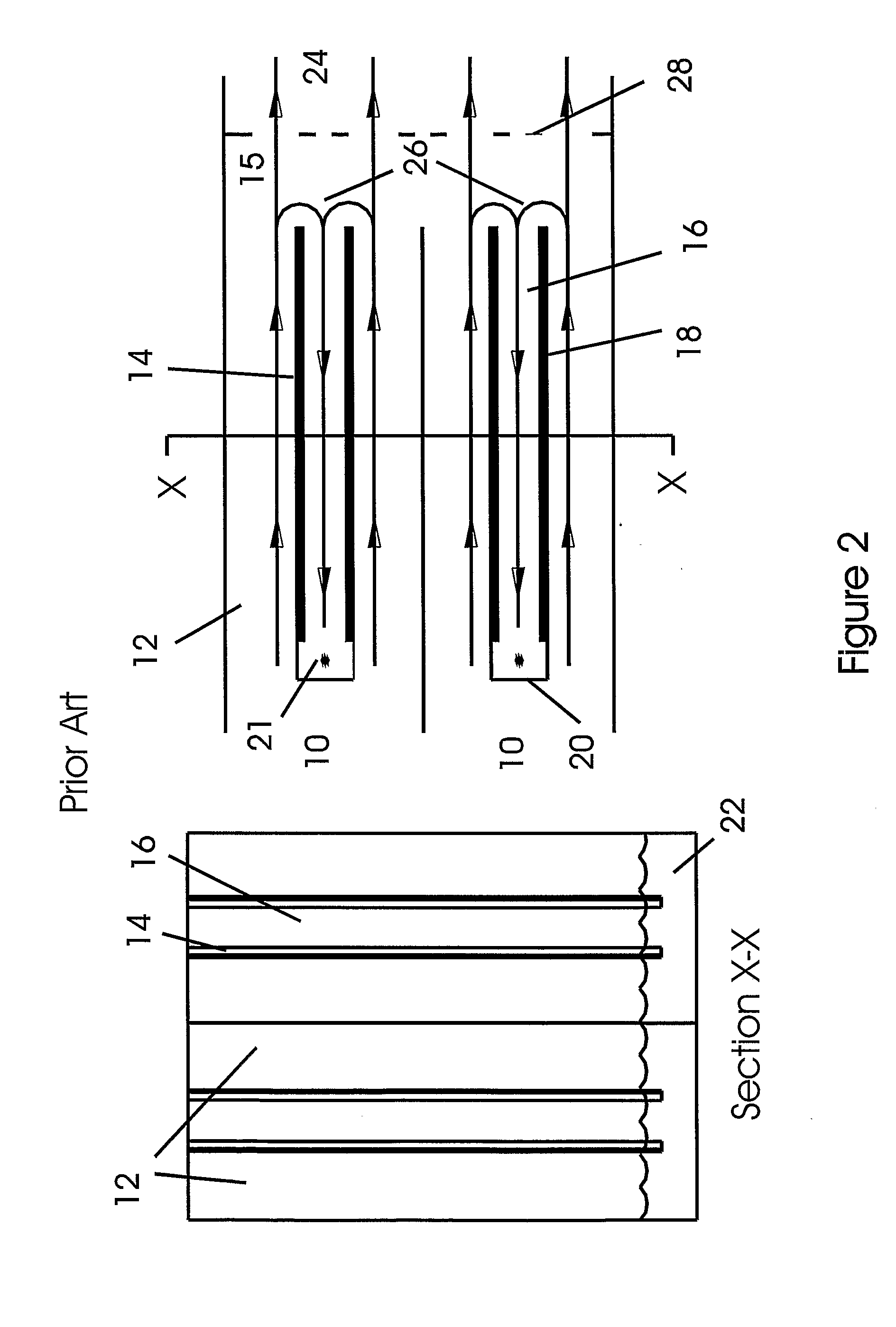Method and Materials for Improving Evaporative Heat Exchangers
a heat exchanger and evaporative technology, applied in the direction of trickle coolers, free-cooling systems, combustion air/fuel air treatment, etc., can solve the problems of limiting the degree of cooling available, limiting the use of this cooling method, and construction suffering a number of deficiencies
- Summary
- Abstract
- Description
- Claims
- Application Information
AI Technical Summary
Benefits of technology
Problems solved by technology
Method used
Image
Examples
Embodiment Construction
[0041]In FIG. 1, the prior art corrugated media is shown as a block of sheets of corrugated, wettable media within which dry air and water on the wetted surfaces interact. The block 1 is constructed from individual sheets 4 of corrugated media (typically treated paper of a type which readily wicks water along its surface). Individual corrugations 6 are impressed in the media during manufacture and the sheets arranged such that the corrugations are set at an angle 8 to the edges of the block of media. Adjacent sheets 4 are typically glued together with reversed corrugation angles creating complex air and water passages within the matrix of the block.
[0042]In operation, water is introduced in the direction 3 and applied to the top surface of the block of media. As the water 3 descends through the matrix, it encounters numerous points within the matrix where the corrugations 6 of adjacent sheets 4 meet. At each of these intersection points, part of the water is directed one way around ...
PUM
| Property | Measurement | Unit |
|---|---|---|
| Temperature | aaaaa | aaaaa |
| Temperature | aaaaa | aaaaa |
| Temperature | aaaaa | aaaaa |
Abstract
Description
Claims
Application Information
 Login to View More
Login to View More - R&D
- Intellectual Property
- Life Sciences
- Materials
- Tech Scout
- Unparalleled Data Quality
- Higher Quality Content
- 60% Fewer Hallucinations
Browse by: Latest US Patents, China's latest patents, Technical Efficacy Thesaurus, Application Domain, Technology Topic, Popular Technical Reports.
© 2025 PatSnap. All rights reserved.Legal|Privacy policy|Modern Slavery Act Transparency Statement|Sitemap|About US| Contact US: help@patsnap.com



